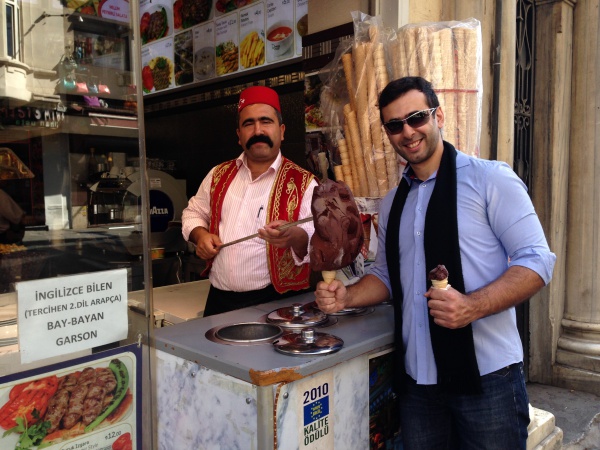Facts About Dondurma
Dondurma is a distinctive Turkish ice cream renowned for its thick, chewy texture and remarkable resistance to melting. It shares similarities with the Syrian dessert booza. This unique treat is crafted from a blend of cream, whipped cream, salep (a flour derived from the tuber of an orchid), mastic (a plant resin), and sugar. The salep and mastic contribute to its signature consistency.
Originating from the city of Maraş, dondurma is often referred to as Maraş ice cream. In the Kahramanmaraş region, a particularly rich version known as maraş dondurması contains such a high concentration of salep that it becomes exceptionally firm and sticky, often requiring a knife and fork to eat.
Dondurma is typically sold by street vendors who add a touch of theater to the purchasing experience. These vendors, clad in traditional Ottoman attire, put on playful performances, serving the ice cream on sticks and engaging customers in entertaining antics. In some cases, dondurma is even served in a style reminiscent of Shawarma, with portions sliced off using a butcher knife.
Despite its endearing qualities and popularity, the average ice cream consumption in Turkey was only 2.8 liters per person per year as of 2010, a figure significantly lower than in countries like the United States and Australia. Many Turks hold the belief that consuming cold foods, such as ice cream, can cause illness, leading them to often pair it with warm beverages.
The growing demand for salepli dondurma has led to a decline in wild orchid populations in the region, resulting in a ban on the export of salep. Beyond Turkey, a variation of this ice cream known as "dudurmas" or "kaimaki" is enjoyed in Greece, particularly in the northern regions.

 Iran
Iran